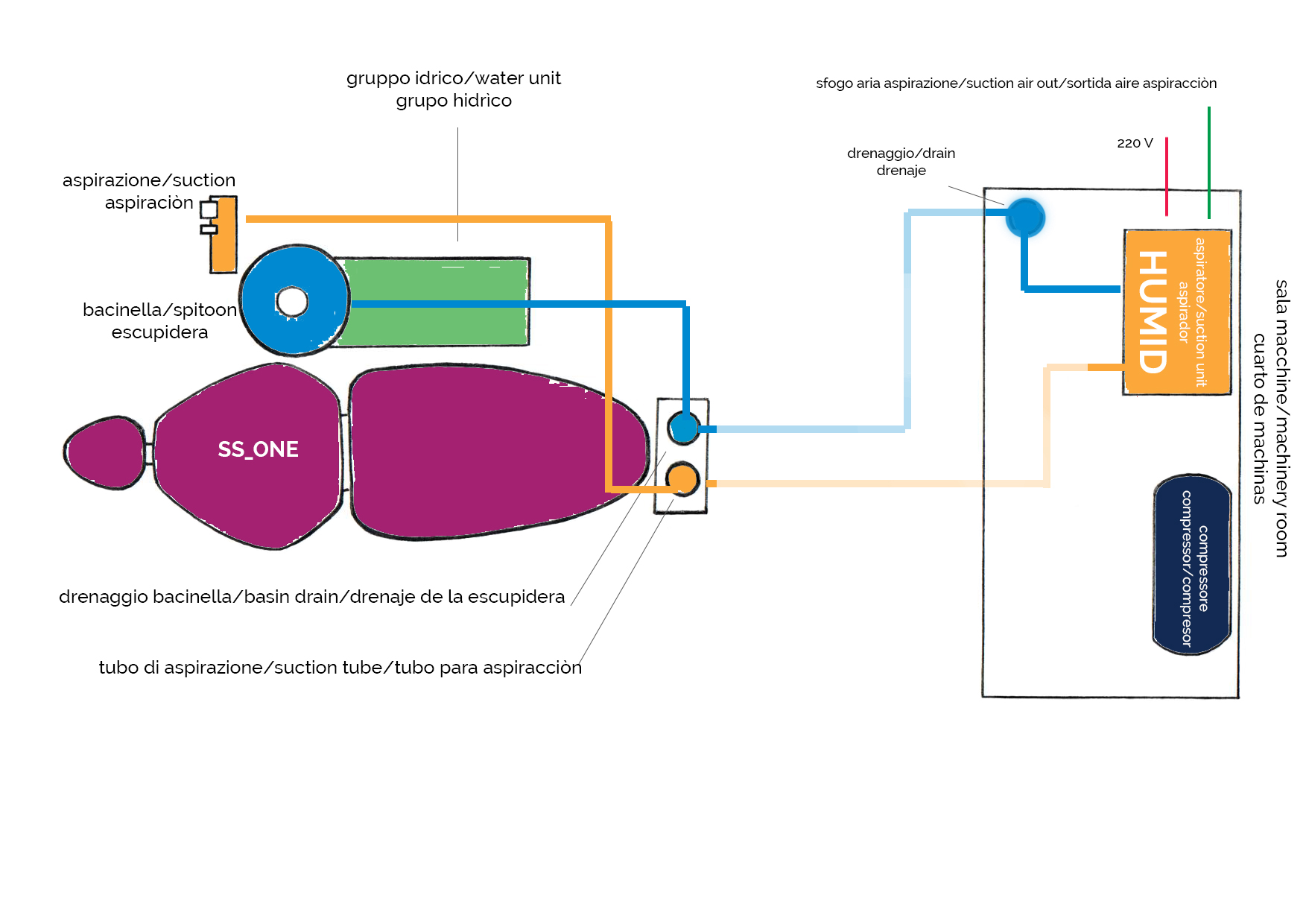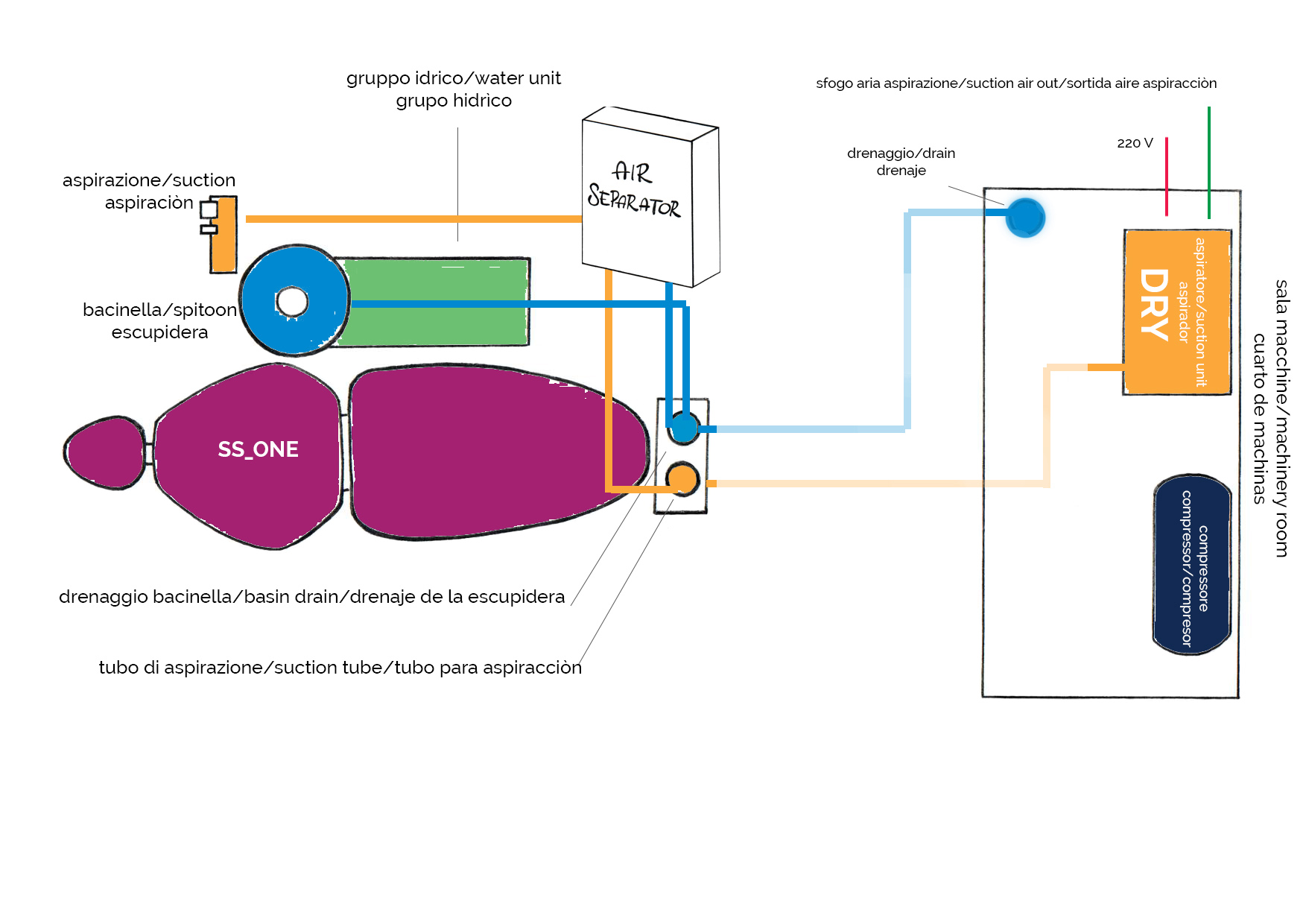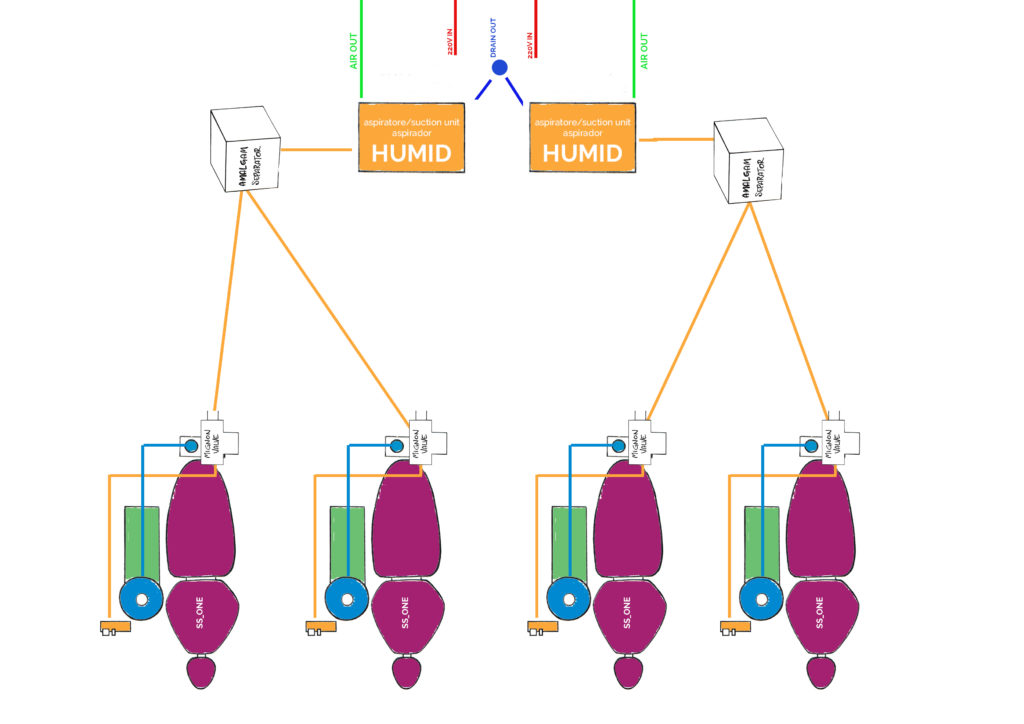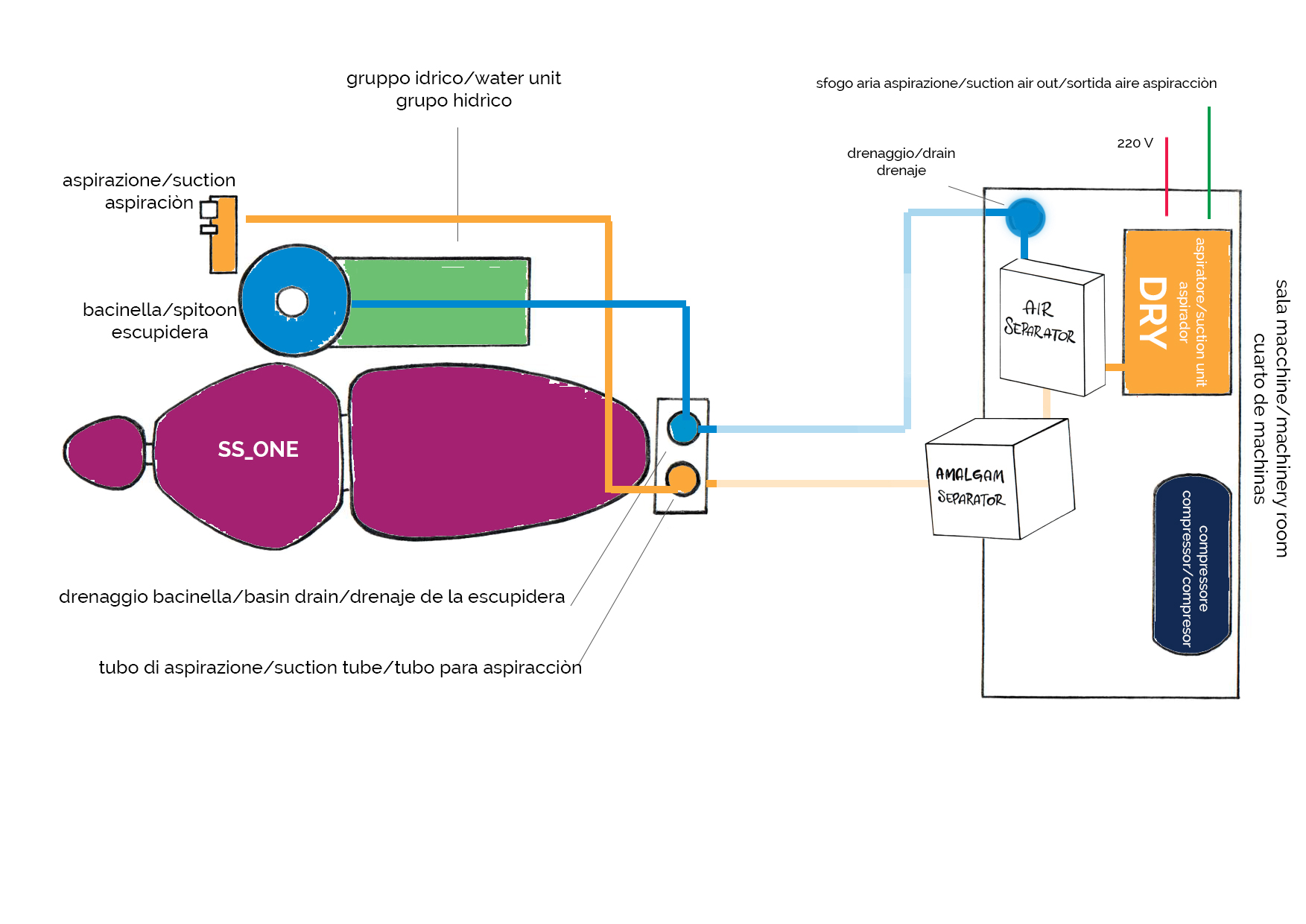SUCTION SYSTEM IN A DENTAL CLINIC: DRY OR WET?
WHICH IS BETTER?
Introduction
The dental suction system is a very important element in a Dental Clinic. In 1961 the German manufacturer Dürr Dental made the first dental aspiration system. From that time, suction system has become very popular in dentistry.
This invention completely transformed the way of working for dentists, who began to treat their patients horizontally instead of vertically. With suction system, not only the hygiene of the process was improved, but also the ergonomics and comfort for the patient and the professional.
A medical suction pump is a key piece of equipment of any clinic or dental practice. Its main use is related to the reduction or elimination of cross contamination between the patient and the dentist through motors and aspiration systems.
The right suction pump improves patient outcomes, reduces the risk of complications, and can promptly intervene in the event of a serious dental emergency.
The aspirator is a machine that is responsible for sucking the saliva that accumulates in the oral cavity of the patient, the suction system is composed by the motor the tubings, and the terminal part of the suction system installed on the dental unit which is composed of rubber tubes and suction cannulas.
How the dental chair aspiration system works?
There are mainly two types of dental suction: wet suction and dry suction.
In the wet suction system no air-liquid separators are installed into the dental equipment, and both the liquids and the air are taken to the suction system. In this system, the suction motor works in dry conditions, but the device itself has an air-water separator, more efficient than the one usually installed into dental units, which ensures that no type of liquid reaches the motor. The liquids are sent to a drain that must be placed into the engine room.

The dry suction system gets its name because the air-liquid separation is carried out into the dental unit, by means of a centrifugal or decanting separator. In this way, all the liquids are taken to a drain
that must be located under each of the dental units installed in the clinic. When separating the liquid in each unit, we need a separator and a drain for each equipment, but we do not need drainage in the clinic’s machine room, since only dry air arrives into the suction system.

Wet or Dry?
Advantages of wet suction systems:
Central amalgam separation is relatively easy to implement on a wet suction system.
With more than three dental units, a wet suction system is more performing.
Disadvantages of wet suction systems:
The pipe installation is more complex for a wet suction system. It needs to be considered whether the suction pipes are already present in the clinic and how they are designed because, in some cases, the installation of new pipes might be required for a wet suction system.
The suction motor can be installed only on the same floor as the surgery or in the room at a lower floor (but not on an upper floor).

Advantages of dry suction systems:
Dry suction systems offer simple line routing and flexible installation options for the suction motor.
With dry suction systems, the suction units can be installed also on an upper floor.
Disadvantages of dry suction systems:
An air/water separation unit, possibly with an amalgam separator, must be installed into the dental unit.
With more than three treatment units, the dry suction systems are more cost-intensive.

Questions that should always be asked before making a decision
What are the existing treatment units primarily set up for? A dry suction system or a wet suction system?
If necessary, is it possible to convert the treatment units?
Because: The construction requirements of the suction line network and the possibilities for conversion often determine the choice of the possible system.
Ask to simple&smart’s specialists which can be the right solution for your clinic.
Cleaning and maintenance
Once you have purchased and installed your aspiration system, it is very important to take into account its cleaning and maintenance. It should be cleaned every day with a disinfectant to avoid unpleasant odours and also that the system clogs and stops working.

In addition, another of the things that you should pay attention to, is the new European regulations about amalgam separators. As of January 2019, it is mandatory, for all the dental clinics, to separate
the amalgam from the liquinds drained through the dental suction system.
Simple&smart of course worked to find a simple and convenient solution also about amalgam separator.
Which brand?
Durr, Cattani and Metasys represent the market leaders even if there are other smaller but interesting companies that produce this kind of equipments. Sometime they are very high in quality and with a more reasonable price.
The company 4tek in Italy represent one of them and Simple&smart is now producing his suction and compressor line in cooperation with them.
To have a complete overview on the suction machines available in our catalogue, contact us by e-mail at info@simplesmart.it.
